After Effects is a comprehensive video and animation software tool that offers you a wide range of possibilities to realize creative projects. In this guide, you will go through advanced features and learn how to optimally customize and organize your workspace in After Effects.
Key insights
- You can customize and save your workspace according to your needs.
- The project window is the central hub for all files in your project.
- Organize your working files through folders, labels, and the search function.
- Create new compositions and work efficiently with video files and effects.
- Use the 3D features for more complex animations and scenes.
Step-by-Step Guide
Customizing and Saving Your Workspace
After arranging your windows, you can save your workspace. Click on "New Workspace" and give your workspace a name. Confirm the entry, and you now have a custom workspace.

Understanding the Project Window
The project window is the central hub where all your files are managed. Here you can import and organize video files, music, and images. All files are listed here and include important information such as name, type, size, and length.
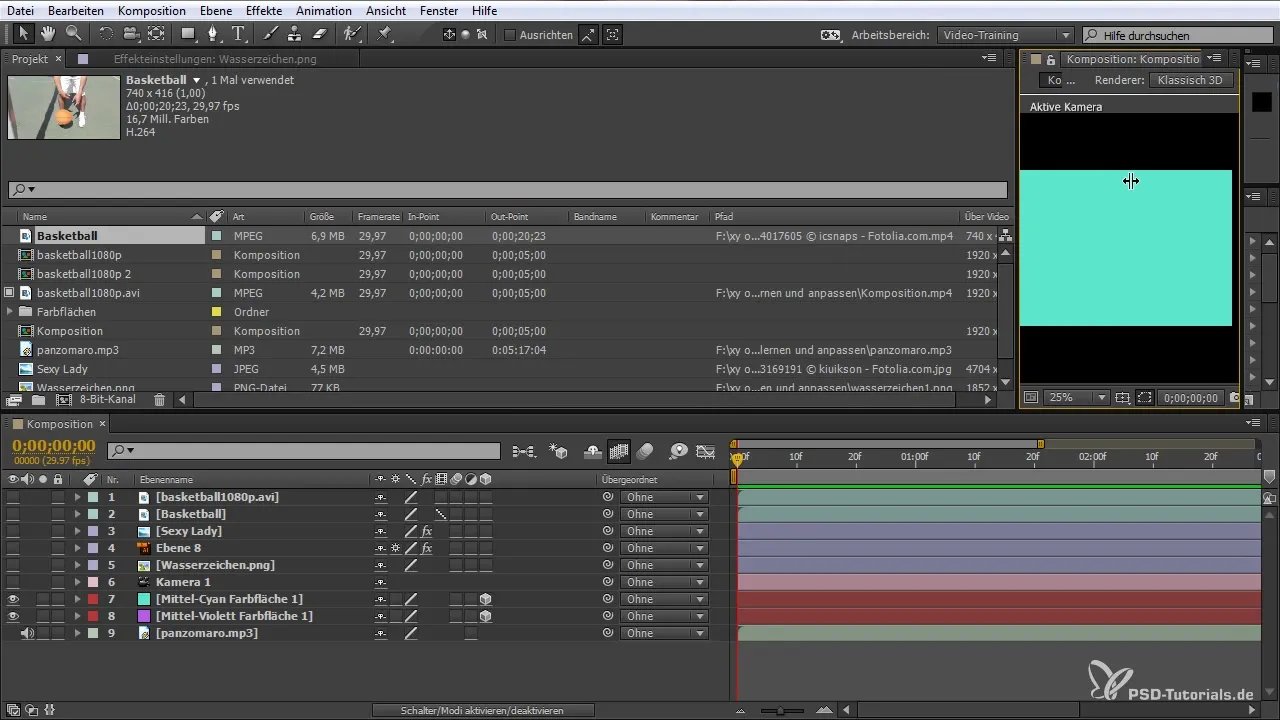
Creating and Using Folders
To better organize your files, you can create folders in the project window. Use the icon to create a new folder, name it e.g., “Videos,” and drag your files into this folder. This helps maintain overview.
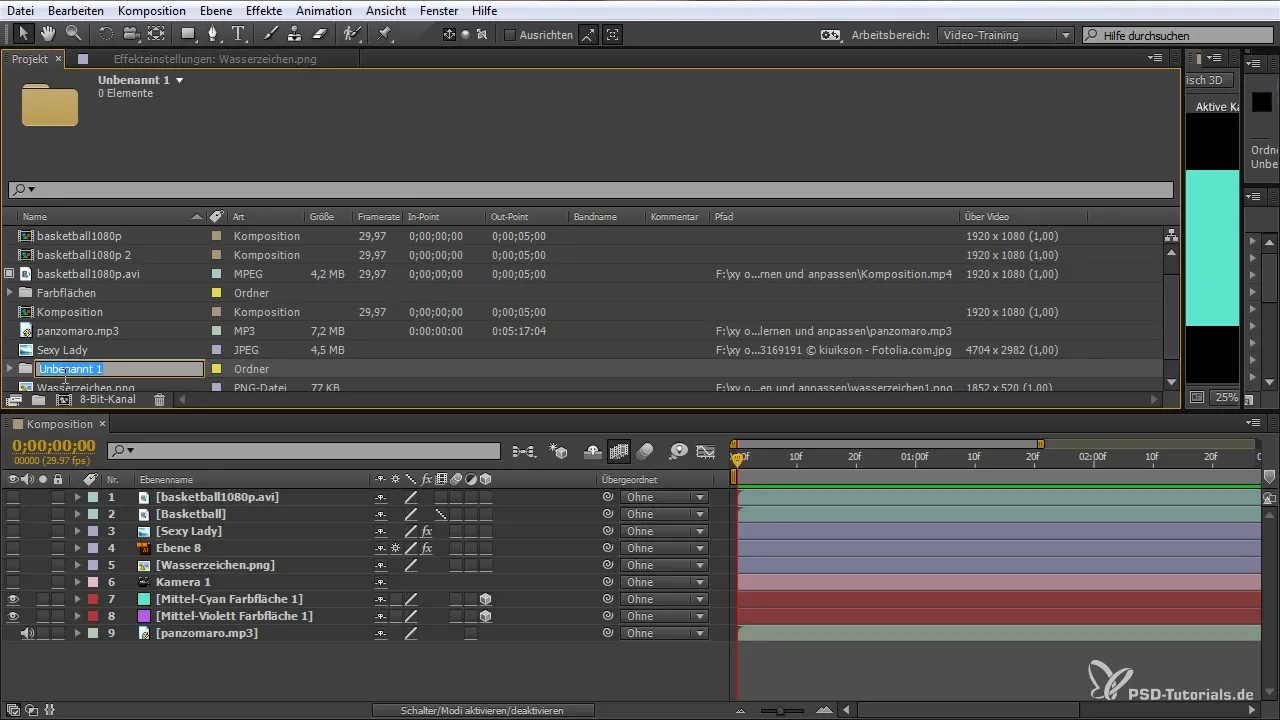
Creating and Customizing Compositions
To create a new composition, click on “New Composition” and adjust the settings. You can drag existing files into the composition. When working with an existing composition, you can adjust it as usual.
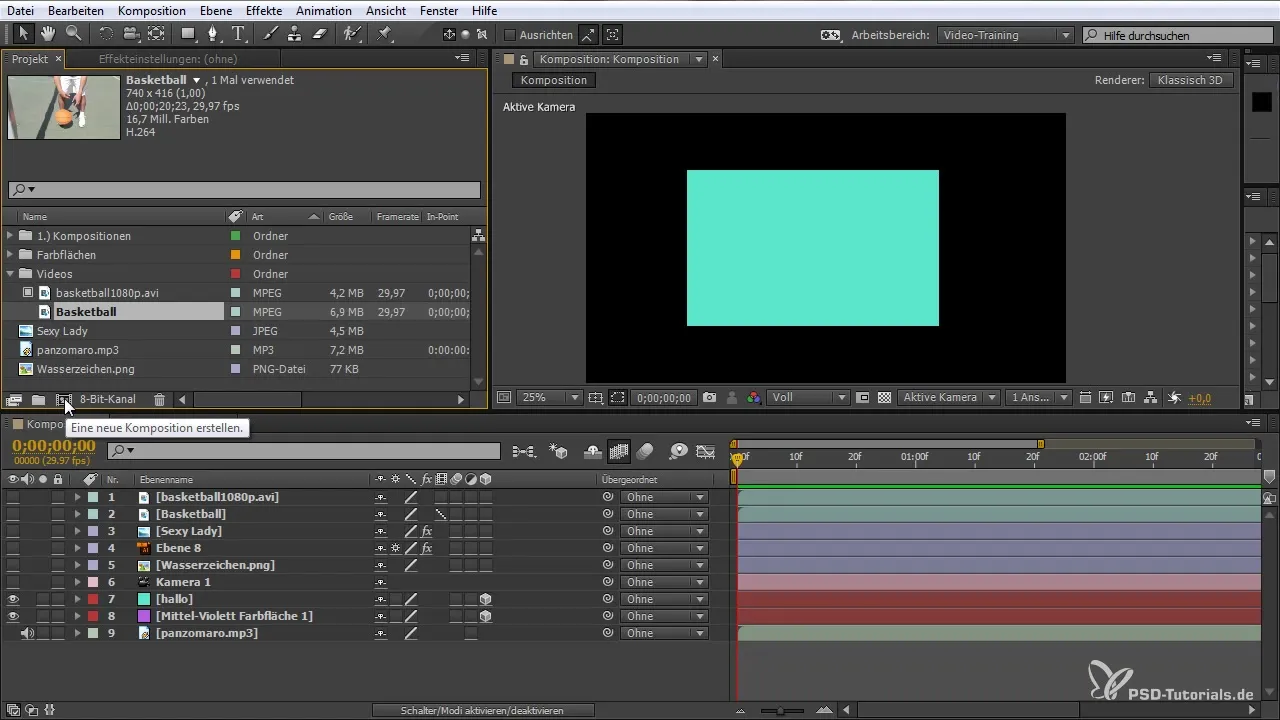
Using Color Labels
To further improve clarity, you can use color labels for different elements. Mark your layers and choose a color to indicate their status. This way, you keep track of edited and pending files.
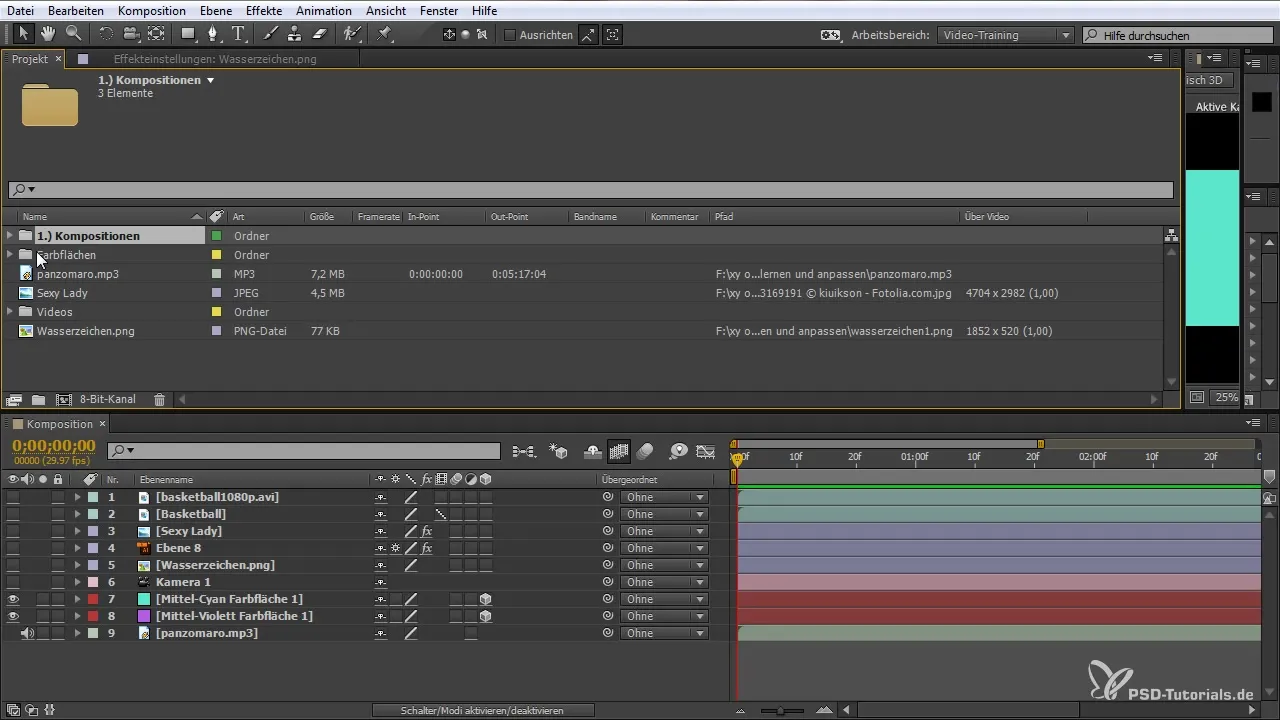
Search Function in the Project Window
The search function in the project window is extremely useful. If you work a lot with different layers, you can quickly search for specific elements. Just type in the name of the layer you are looking for, and After Effects will show you all matching results.
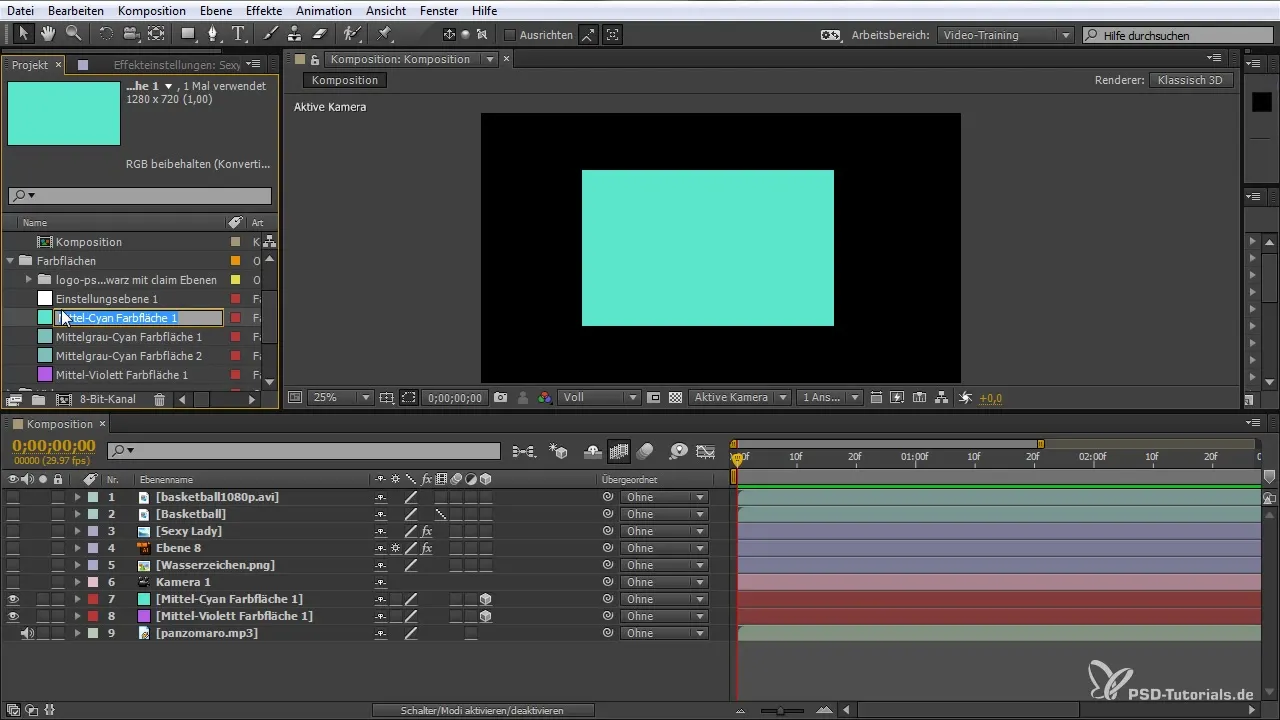
Effective Use of 3D Features
With the 3D features, you can create a more complex space. To enable a layer in 3D, select the 3D icon in the layer options. This feature allows you to control positions and perspectives in all three dimensions.
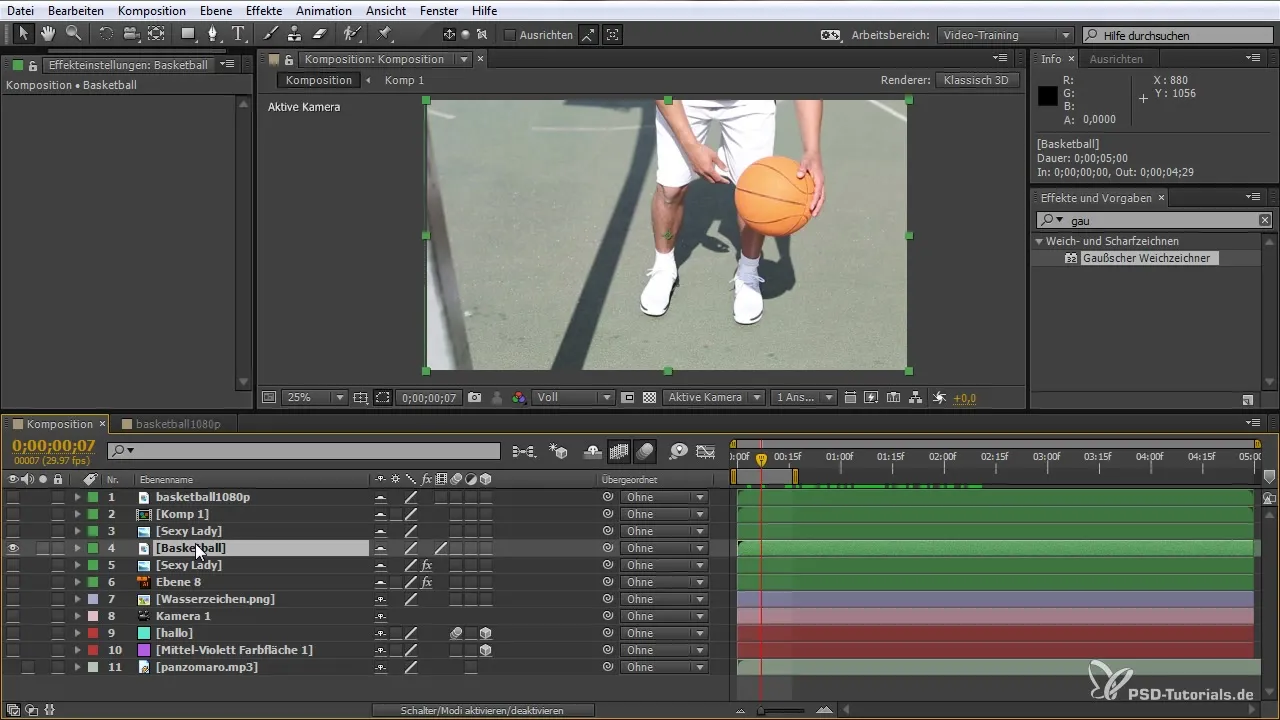
Enabling Motion Blur
Motion blur helps to make movements of the layers in your compositions smoother. Activate the option for the layers where you want to use motion blur to achieve a natural motion effect.
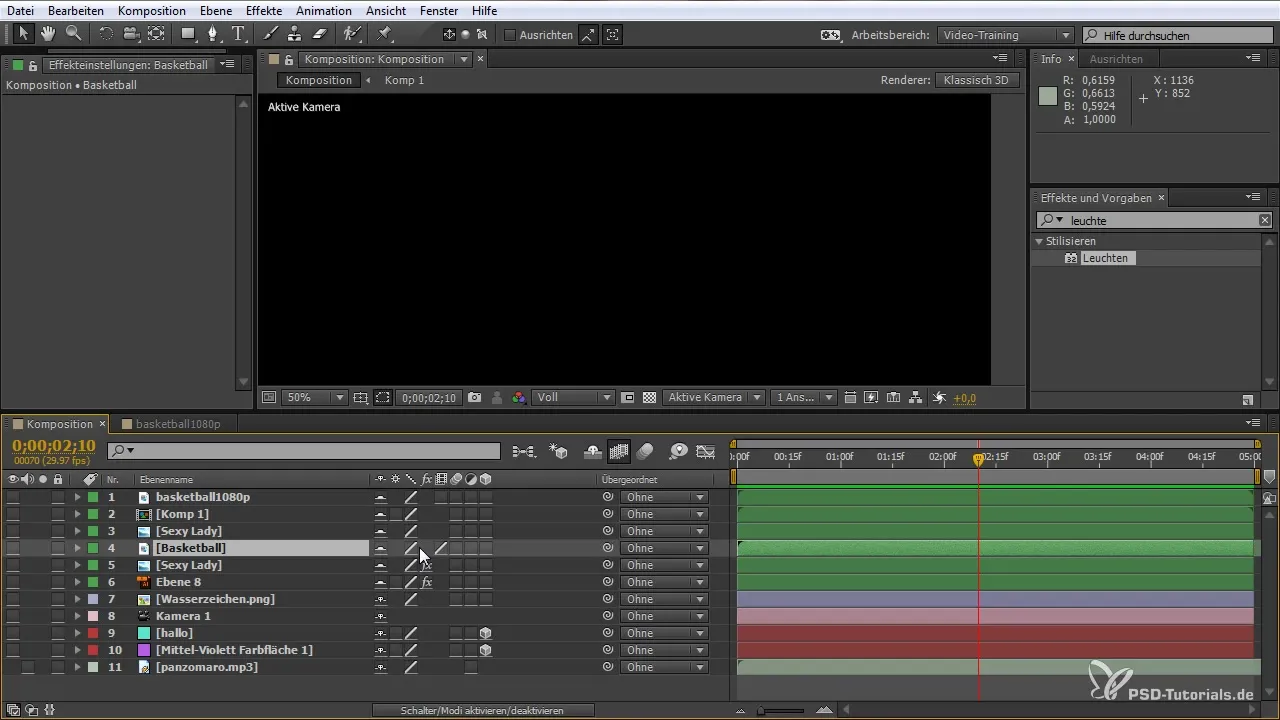
Creating Adjustment Layers
Adjustment layers are a valuable tool for applying effects globally to all underlying layers. Right-click and select “New Adjustment Layer” to apply effects like blur without having to edit each file individually.

Using Animation Options
Use the animation options to make time-dependent changes to your layers. You can set the duration as well as use the variety of keyframes to make animations fluid and appealing.
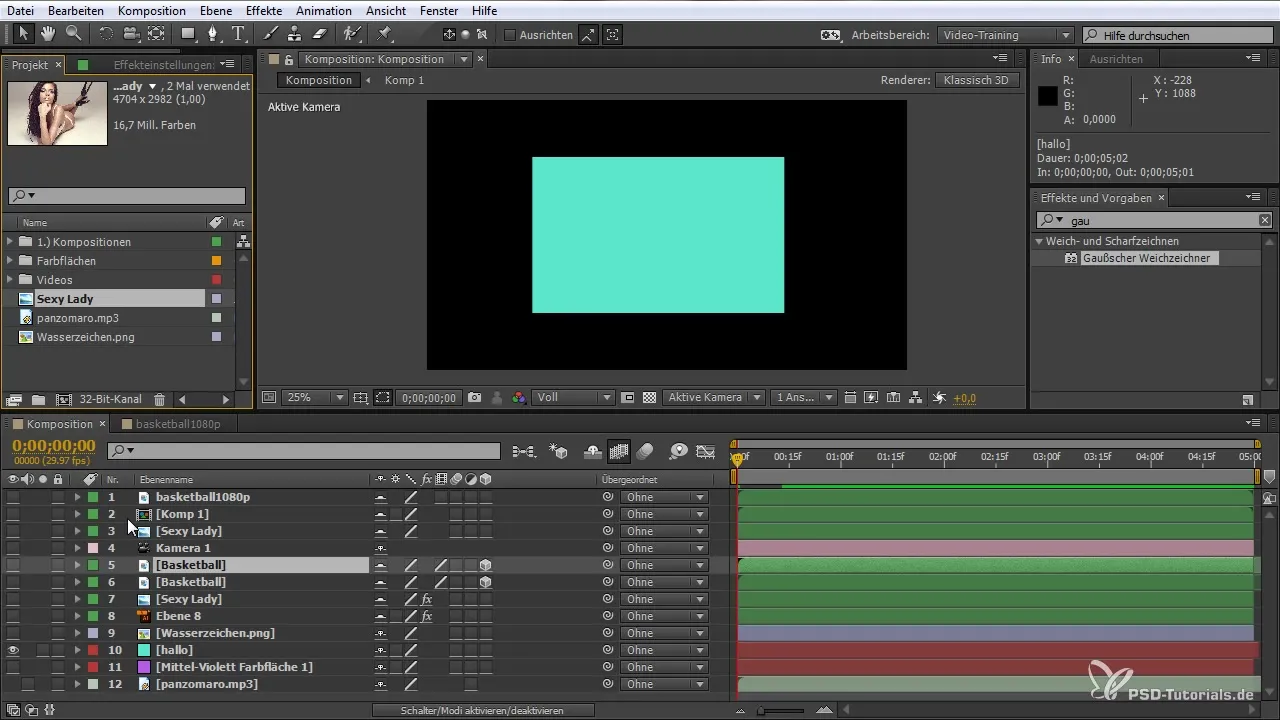
Summary – Optimizing Your Workflow in After Effects: Understanding Advanced Features
With the presented features and tools, you can use After Effects even more effectively. By organizing files and customizing workspaces, you can significantly optimize your workflow. Trust in the versatile tools in After Effects and experiment to take your projects to the next level.
Frequently Asked Questions
How do I save my workspace in After Effects?Click on "New Workspace," enter a name, and confirm.
How do I organize files in the project window?Create folders and drag the corresponding files into them.
Can I edit my compositions as 3D objects?Yes, activate the 3D option in the layer settings.
What are adjustment layers and how do I use them?Adjustment layers apply effects to all underlying layers.
How do I enable motion blur for a layer?Activate the motion blur icon in the layer options.


